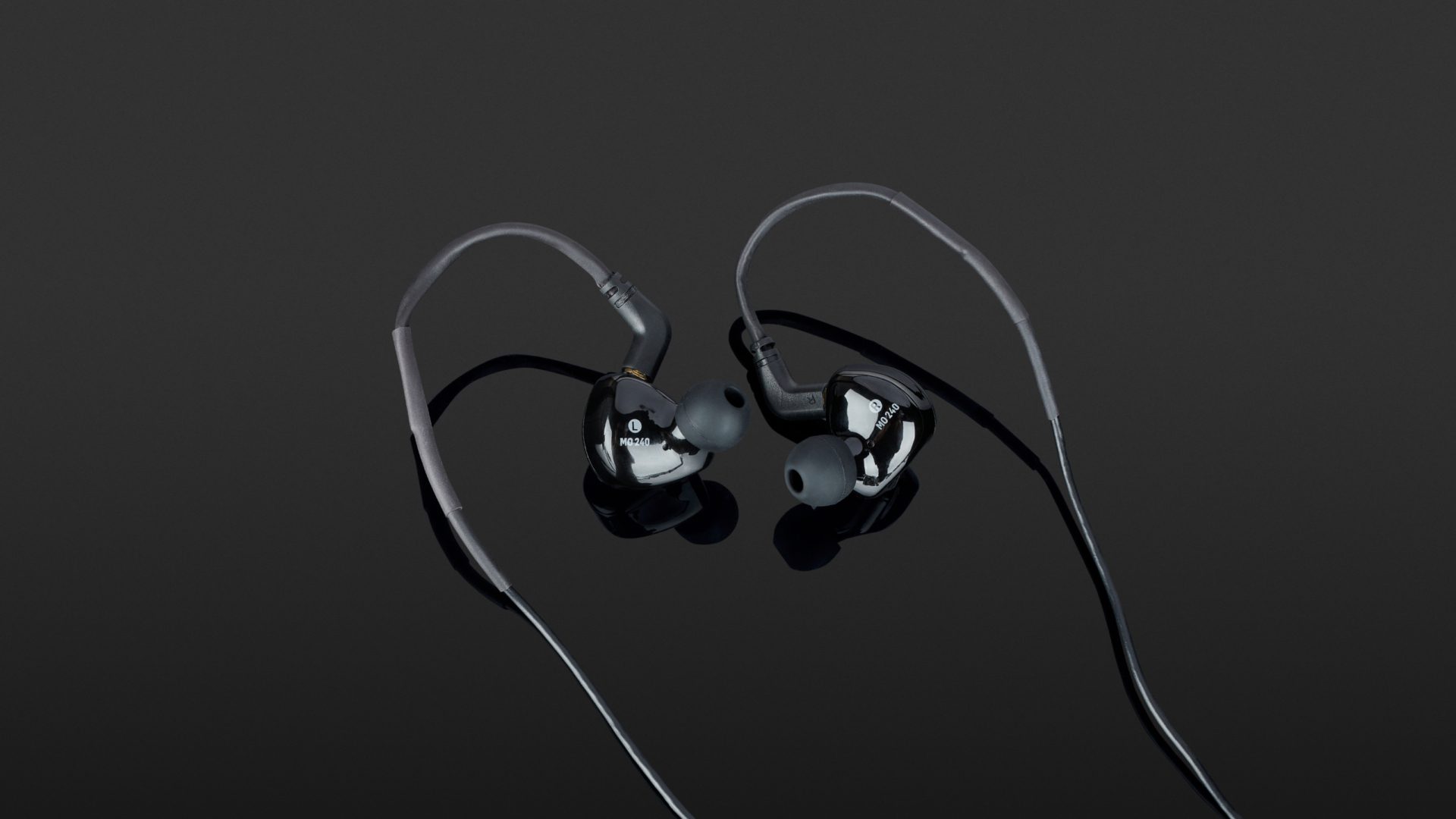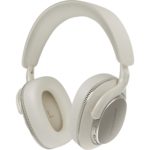The Behringer MO240 are, in view of the technology they contain, comparatively inexpensive in-ear headphones whose sound signature makes them particularly suitable for gamers who want to pick out speaking voices between loud explosions, running background music and all kinds of game audio. But classical music fans can also take a chance here if they are looking for a budget model. As in-ears for monitoring music recordings, the use of the MO240 makes sense where voices and vocals need to be heard in dense audio productions, for example, to use them as a guideline for one’s own performance. The package and handling of these headphones are top-notch for the price. The production and quality of the components used also leave nothing to be desired for the modest budget involved.
The Behringer MO240 offer both dynamic and symmetrical-armature drivers. With this technology in mind, these inexpensive in-ear headphones are particularly suitable for areas of application where voices and vocals need to be heard in dense audio productions or games. But classical music fans can be all means take a chance here if they are looking for a budget model.
Behringer advertise their MO240 in-ear model with the bold promise of being suitable for monitoring use with a wide range of studio equipment. And when an ultra-linear frequency response, high isolation and balanced-armature technology are also promised, we naturally wanted to take a look at the MO240 in action…
Package
In addition to the two earphones, the Behringer MO240’s small box also included an interchangeable cable. The shielded cable terminates with a 3.5 mm jack plug at one end. The opposite ends are equipped with MMCX plugs that plug into the earphones. This type of plug is usually found on higher-end in-ears. Behringer surprised us with this. In addition, all plugs are gold-plated. This protects them from corrosion. Three pairs of foam and silicone ear tips are included in different sizes. Last but not least, all this can be stored in the accompanying soft transport case, which is securely closed with a zip. A Bluetooth adapter for wireless use is also available as an option.
Material, construction and technology of the Behringer MO240
The all-black Behringer MO240s make a good impression, both visually and haptically. They are ergonomically shaped, lightweight and do not look at all “cheap”. Inside each earphone, there is a balanced-armature driver for the highs and a dynamic driver with powerful neodymium magnets for the bass. The crossover frequency of the two drivers is 500 Hz.
Overall, these button headphones cover a frequency range that extends from 20 Hz to 20 kHz, thus covering the entire typical human hearing range. At 32 ohms, the impedance of these in-ears is not quite as low as other devices. Nevertheless, they promise loud reproduction even at low-voltage headphone outputs. The maximum level achieved by the MO240 is 102 dB/SPL.
Handling
The Behringer MO240’s interchangeable cable is equipped with MMCX connectors. With their help, it is child’s play to attach and detach the cable from the earphones. The technology sets no limits to their use and ensures easy handling. The cable is equipped with a bendable wire at the earphone end. This allows the ends to be comfortably bent over and adjusted to the ear cups for relief of strain. At 1.50 m, the cable is the right length to be laid under clothing for use in everyday life. Used over clothes, it is long enough to reach an audio interface or headphone amplifier when recording.
How the Behringer MO240 sound
In addition to a flat frequency response, the Behringer MO240s are said to deliver full bass and detailed treble. In our practical test, the sound of these in-ears was noticeably treble-heavy. The upper mids were also very present. There was a distinct hiss in sung and spoken S sounds. In addition to using them as monitor headphones for music recordings, Behringer also sees the MO240 being used for chats and gaming sessions. For these applications, pronounced mids are especially necessary so that voices can be well perceived. And indeed, speaking voices and vocals are clearly perceptible with these headphones, even in dense audio productions. When it comes to bass, however, the MO240s need to be helped along with appropriate equaliser boosts. But then they really do deliver, right down to the sub-bass. As discreet as the bass remains, even the deepest tones of hip hop and urban music were eventually delivered. At the other end of the audio spectrum, the super-high frequency range was covered by the MO240. At no time did we get the impression of a “capped” sound that would lack openness and air in the treble.
But the biggest surprise I experienced with these in-ears was when listening to classical music. My first ports of call, Igor Stravinsky’s “Le sacre du printemps” and “The Firebird”, sounded really good through these in-ears. Who would have thought it? Classical music lovers who are looking for a really affordable pair of button headphones for on-the-go use and are willing to sacrifice sound balance will find what they’re looking for in the MO240s.
These in-ears certainly score points in terms of volume. However, it is worth listening more closely. The prerequisite for high volumes to be reproduced without distortion is that the bass is not boosted by an equaliser. As a result, the sound in the lower frequencies remains weak. In addition, the sharpness in the upper mids rises so dramatically with increasing volume that listening to audio with speech and vocals becomes tiring and unpleasant. In contrast, the attenuation of external noise was successful.
Technical specifications
- Ear couplingIn-ear
- Typeclosed
- Transducer principledynamic + Balanced Armature
- Frequency response (headphones)20 - 20.000 Hz
- Impedance32 ohms
- Sound pressure level (SPL)102 dB
- Weight without cable15 g
- Cable length150 cm
What's in the box
- 3 pairs of silicone ear tips (S, M, L)
- 3 pairs of foam ear tips (S, M, L)
- Interchangeable cable (1.50m)
- 6.35mm stereo jack
- Cleaning tool
- Carrying soft case

















































